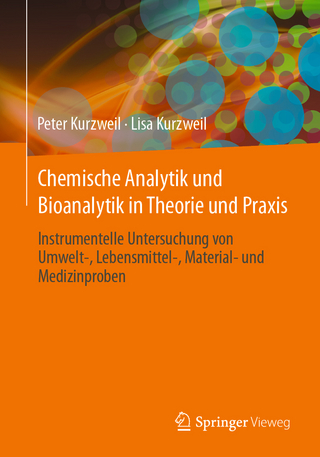
Peroxisome Proliferator-Activated Receptors
Humana Press Inc. (Verlag)
978-1-62703-419-7 (ISBN)
As PPARs play critical roles as regulators of numerous physiological as well as pathophysiological pathways, Peroxisome Proliferator-Activated Receptors: Discovery and Recent Advances aims to help researchers to develop safer and more effective PPAR modulators as therapeutic agents to treat a myriad of diseases and conditions.
Introduction.- History of PPAR Discovery: Peroxisomes.- Peroxisomal biogenesis and diseases.- Peroxisome proliferation.- Peroxisome Proliferator-Activated Receptors: Chromosomal location and gene polymorphism.- Protein structure.- PPAR Ligands: Endogenous ligands.- Exogenous PPAR modulators.- Tissue Distribution and Versatile Functions of PPARs: Neurological functions of PPARs.- PPARs and the cardiovascular system.- PPARs in pulmonary physiology and disease.- Gastrointestinal roles of PPARs.- PPAR functions in the liver.- Roles of PPARs in the pancreas.- PPARs in the urinary tract physiology and pathophysiology.- PPARs in the reproductive system.- Bone metabolism and PPARs.- Roles of PPARs in skeletal muscle biology.- Skin PPARs.- PPARs and Drug Metabolism.- Molecular Aspects of PPAR Actions: Posttranslational control of PPARs.- Mechanism of action.- Animal Models in PPAR Research.- Safety of PPAR Agonists.- The Future of PPAR Research.
| Zusatzinfo | IX, 137 p. |
|---|---|
| Verlagsort | Totowa, NJ |
| Sprache | englisch |
| Maße | 155 x 235 mm |
| Themenwelt | Naturwissenschaften ► Biologie ► Biochemie |
| Naturwissenschaften ► Biologie ► Zellbiologie | |
| Schlagworte | Peroxisome proliferation • Peroxisome Proliferator-Activated Receptors • Posttranslational modifications • PPAR discovery • PPARs • Receptor structure |
| ISBN-10 | 1-62703-419-6 / 1627034196 |
| ISBN-13 | 978-1-62703-419-7 / 9781627034197 |
| Zustand | Neuware |
| Haben Sie eine Frage zum Produkt? |
aus dem Bereich


